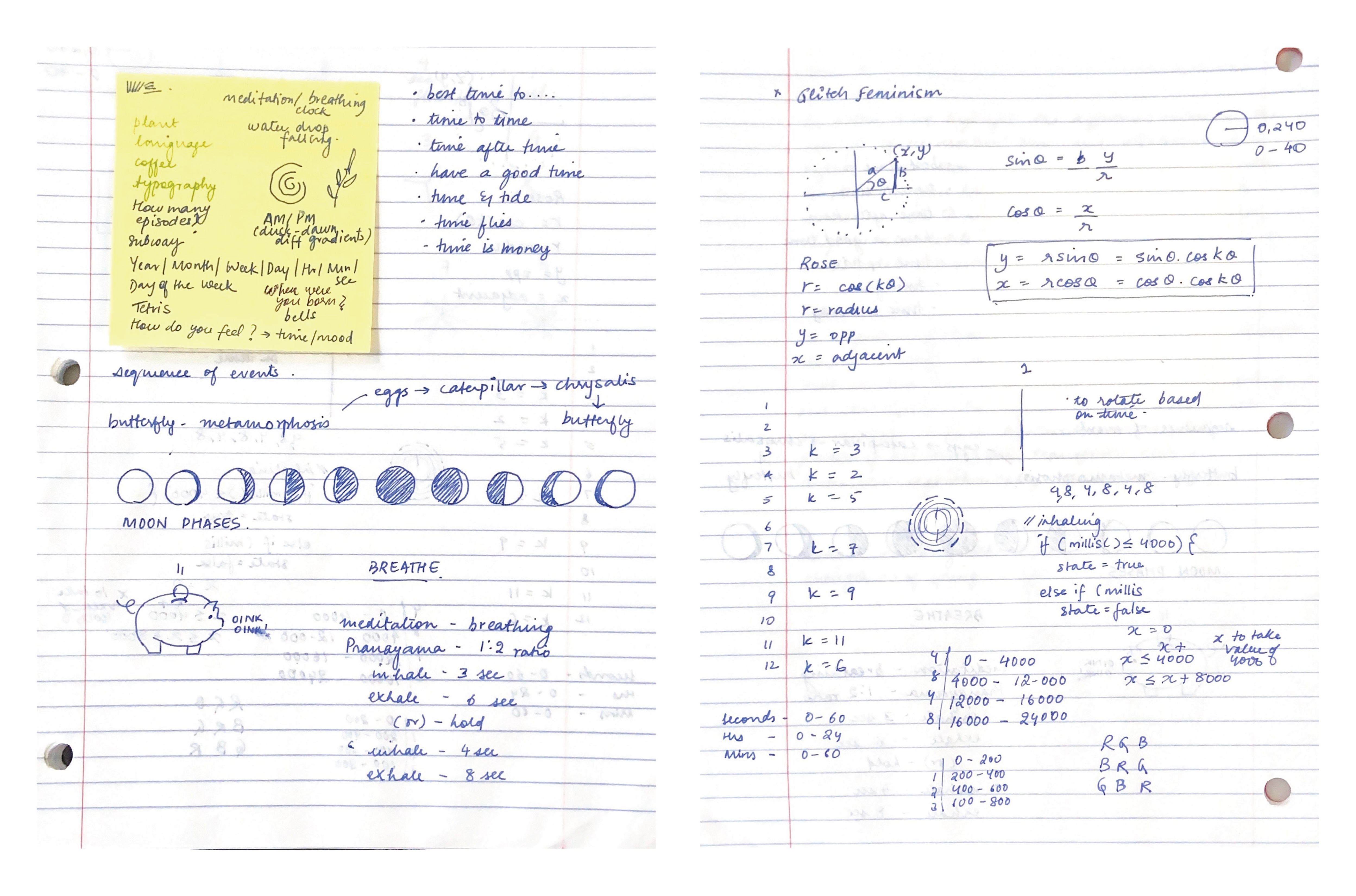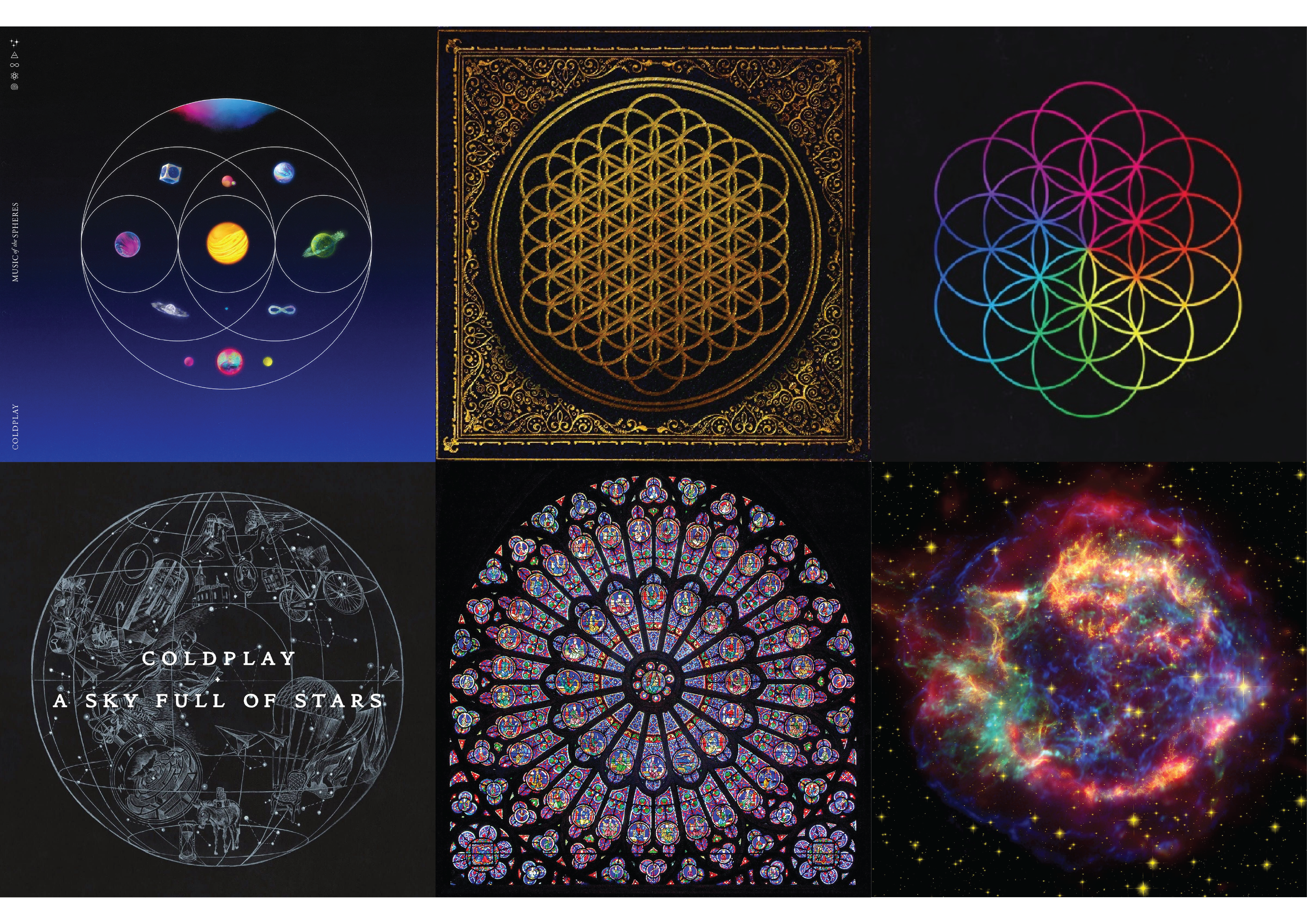#3 Experimental Clock
Cosmic Rose
Wait and watch :) Each second, a unique pattern is generated!
You can view my code here:)
Description
My sketch has a strong cosmic vibe to it like the Coldplay cover art for A Head full of Dreams, A Sky full of Stars and Music of the Spheres. The twinkling colourful stars at the back along with seconds, minutes and hours orbiting around the planet-like form like rockets, add to the 'otherworldiness'. The main form, that of the rose curve, can also be considered an ode to beautiful stained-glass rose windows of cathedrals and churches.
Design Process & Reflection
Brainstorming
While brainstorming for this assignment, I had a bunch of ideas inspired by the phases of the moon, plant cycle, pranayama, life cycle of a butterfly, and so on.

Initial Ideas
I initially thought of working on a pranayama clock with 4 seconds of inhalation and 8 seconds of exhalation, allowing the viewer to 'breathe in' and 'breathe out' along with the sketch, somewhat like the Breathe app on the Apple Watch. I did this with concentric circles appearing and disappearing throughout the time interval.
I also worked on a polka dot sketch with the size of the circle increasing every second. Over the period of one minute, these circles would overlap over each other using blendMode(Multiply) until it covers the canvas size completely.
Inspiration

My sketch is based on the rose or rhodonea curve specified by the formula r=cos(kθ) for various values of k=n/d.

n takes values from 1-7 and d takes values from 1-9. I used the minute() value for the numerator and second() value for the denominator with the map() function. This could also be done without mapping these values but in some cases this would result in an extremely wide range for the k value, with patterns ending up too similar to each other. Below is the sketch without the map function:
After plotting the (x,y) points, I used the same rose curve formula to plot (a,b) for the twinkling stars. However in this case, the radius and the colour are both given random values.
Credits
This project was created based on the tutorials provided on the Critical Computation website, The Coding Train videos on Youtube, and the mathematical Rose curve.